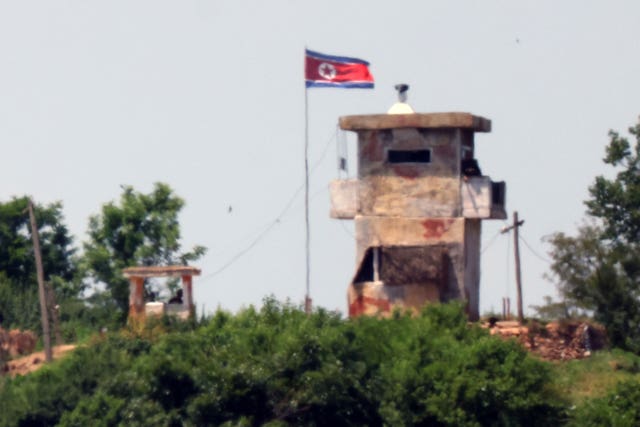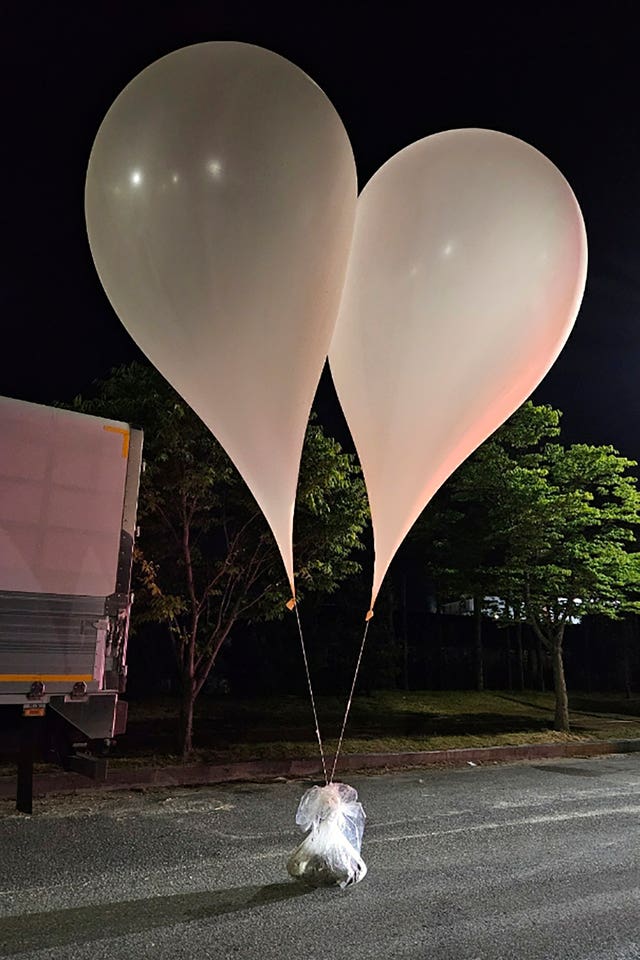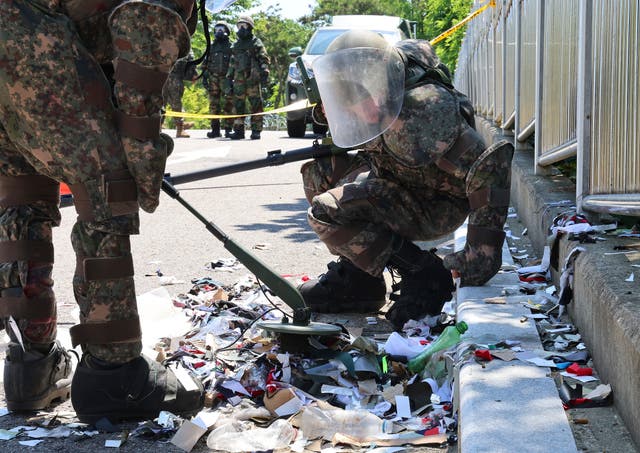
South Korean soldiers fired warning shots after North Korean troops briefly violated the tense border earlier this week, South Korea’s military said on Tuesday.
The rival nations are embroiled in Cold War-style campaigns like balloon launches and propaganda broadcasts.
Bloodshed and violent confrontations have occasionally occurred at the Koreas’ heavily fortified border, called the Demilitarised Zone (DMZ).
While Sunday’s incident happened amid simmering tensions between the two Koreas, observers say it is unlikely to develop into another source of animosity as South Korea believes the North Koreans did not deliberately commit the border intrusion.
North Korea also did not return fire.

At 12.30pm on Sunday, some North Korean soldiers who were engaged in unspecified work on the northern side of the border crossed the military demarcation line that bisects the two countries, South Korea’s Joint Chiefs of Staff said.
Those North Korean soldiers carrying construction tools — some of them armed — immediately returned to their territory after South Korea’s military fired warning shots and issued warning broadcasts, the Joint Chiefs of Staff said. It said North Korea had not conducted any other suspicious activities.
South Korea’s military has assessed that the North Korean soldiers did not appear to have intentionally crossed the border because the site is a wooded area and armistice signs there were not clearly visible, Joint Chiefs of Staff spokesperson Lee Sung Joon told reporters.
Mr Lee gave no further details. But South Korean media reports said that about 20-30 North Korean soldiers had entered South Korean territory about 50 metres (165 feet) after they likely lost their way. The reports said most North Korean soldiers carried pickaxes and other construction tools.
The 248-kilometre-long (155-mile), four-kilometre-wide (2.5-mile) DMZ is the world’s most heavily armed border.

An estimated 2 million mines are peppered inside and near the border, which is also guarded by barbed wire fences, tank traps and combat troops on both sides.
It is a legacy of the 1950-53 Korean War, which ended with an armistice, not a peace treaty.
On Sunday, South Korea resumed anti-Pyongyang propaganda broadcasts from its border loudspeakers in response to the North’s recent launches of balloons carrying manure and rubbish across the border.
South Korea said North Korea has installed its own border loudspeakers in response but has not turned them on yet.
North Korea has said its balloon campaign was in response to South Korean activists’ launches of their own balloons to drop propaganda leaflets critical of leader Kim Jong Un’s authoritarian rule, USB sticks with K-pop songs and South Korean drama shows, and other items in North Korea.

North Korea is extremely sensitive to any outside criticism of its political system, as most of its 26 million people have no official access to foreign news.
On Sunday night, Mr Kim’s sister and senior official, Kim Yo Jong, warned of “a new response” if South Korea continued its loudspeaker broadcasts and refused to stop civilian leafletting campaigns.
The tit-for-tat over speakers and balloons — both Cold War-style psychological warfare — has deepened tensions between the Koreas as talks over the North’s nuclear ambitions have remained stalled for years.


Comments: Our rules
We want our comments to be a lively and valuable part of our community - a place where readers can debate and engage with the most important local issues. The ability to comment on our stories is a privilege, not a right, however, and that privilege may be withdrawn if it is abused or misused.
Please report any comments that break our rules.
Read the rules hereLast Updated:
Report this comment Cancel